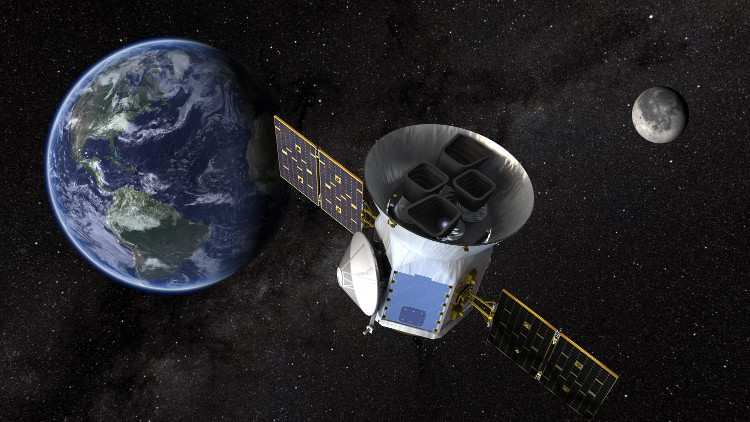NASA planet-like planet hunters will search in the vicinity
The satellite examines the passage of planetary extrinsic (TESS), the latest NASA satellite to search for exoplanets by watching them move through the host star.
While the search for distant exoplanets is heating up every day, NASA's new satellite will choose its own path: finding extrasolar planets near us. When the planet passes through the host star, it will obscure the light and the star will be less bright, thus revealing the presence of the outer planet. The satellite is expected to be launched in 2017 or 2018, expected to define extrasolar planets around bright stars near the Sun.
TESS will also rely on the size of the extraterrestrial planet to indicate how long it will take them to complete an orbit. Here are two important information to determine if extraterrestrial life is likely to exist. Almost all extraterrestrials are classified by observing observations, because a team of ground-based scientists of the TESS project and the James Webb Space Telescope will be launched in 2018.
Compared to the Kepler mission, a mission has been searching for alien planets from a few thousand to a few tens of thousands of light years away in the constellation of Cygnus, TESS that will search for our planet for only a few hundred years. light or closer in all directions around the solar system.

The TESS satellite image revolves around Earth's orbit.
TESS will survey by dividing the sky into 26 different areas. The ship's powerful cameras will operate continuously in each area for 27 days, measuring the visible light from the targets the brightest every two minutes. TESS will look at stars with a brightness of 12 or brighter, even stars that can be seen with the naked eye. Most of us can see stars with a brightness of up to 6 in the dark sky, while the faintest stars of the North Star star group have an apparent brightness of 3.
Among the stars TESS observes, dwarfs are a good place to identify exoplanets. One of TESS's scientific goals is to find planets the size of or larger than Earth. Finding small extraterrestrials is difficult, because they are too small for their host star. But TESS is designed to focus on finding small extrasolar planets, so this will become easier. The light of the star is obscured by the planet, which is proportional to the size of the planet.
Scientists hope TESS will observe at least 200,000 stars in their two-year space mission, leading to the discovery of thousands of new planets.
While the main goal of the mission is to search for exoplanets, TESS will also observe other physical objects through the Guest Investigator (GI) program , because TESS will examine the sky so it able to perform interesting studies on many other celestial objects.

TESS will search our planet for only a few hundred light years or closer.
"The goal of the GI program is to maximize the amount of science that TESS can accomplish. Although TESS is designed to observe the passage of planetary planets compared to the host star, it does not mean that it is We can't do much more than just hunting the planets, we hope the scientific community in the world will come up with more ideas for TESS, " said Padi Boyd, GI program director at NASA's Goddard Space Center said.
With the potential to expand our understanding of the universe in the coming years, researchers are excited about the discoveries that hope TESS will bring.
"What's interesting about TESS is that someday, I go out to see stars with my daughter, point to a star and say there is a planet revolving around that star," said Stephen Rinehart at the science project. TESS said.
- NASA launches the most modern
- Indian ship MOM has also entered the vicinity of Mars
- NASA's planet hunter finds a black hole ripping apart a star
- Video: A UFO object is parked in NASA's lab yard
- NASA detects a planet with life as Earth
- NASA recruited a new
- Strange planetary system has 3 'Venus'
- Meteorite hunting: Journey to find treasure from the universe
- Suspicious objects cluster towers 5 km high on the Moon
- Ancient 'tree' on Mars
- Discover the first two large planets equal to the earth outside the solar system
- Group of aliens hunters find material to make flying saucers?
 Van Allen's belt and evidence that the Apollo 11 mission to the Moon was myth
Van Allen's belt and evidence that the Apollo 11 mission to the Moon was myth The levels of civilization in the universe (Kardashev scale)
The levels of civilization in the universe (Kardashev scale) Today Mars, the sun and the Earth are aligned
Today Mars, the sun and the Earth are aligned The Amazon owner announced a secret plan to build a space base for thousands of people
The Amazon owner announced a secret plan to build a space base for thousands of people